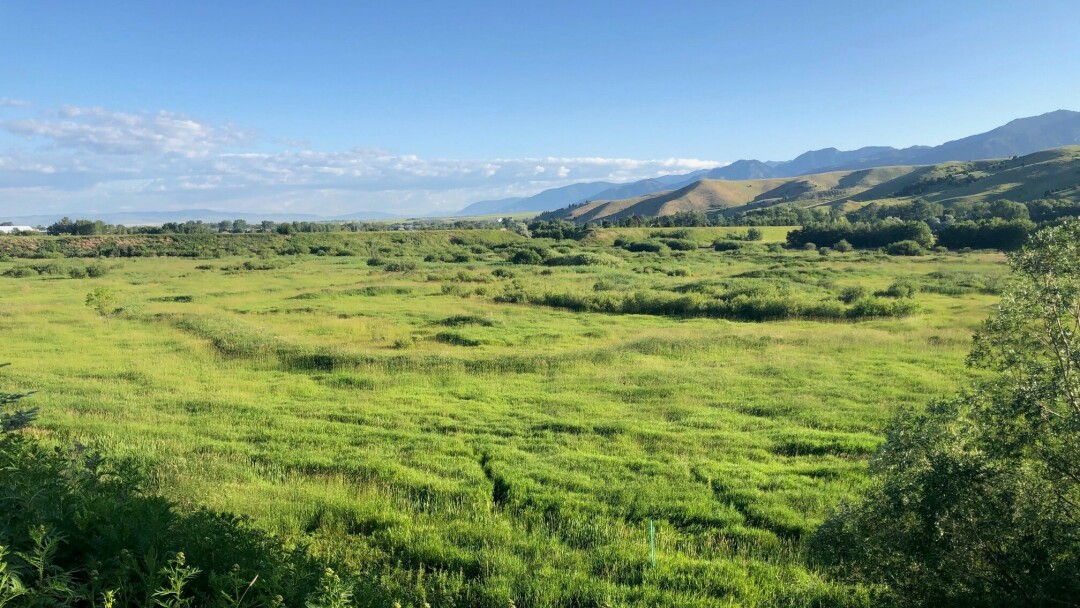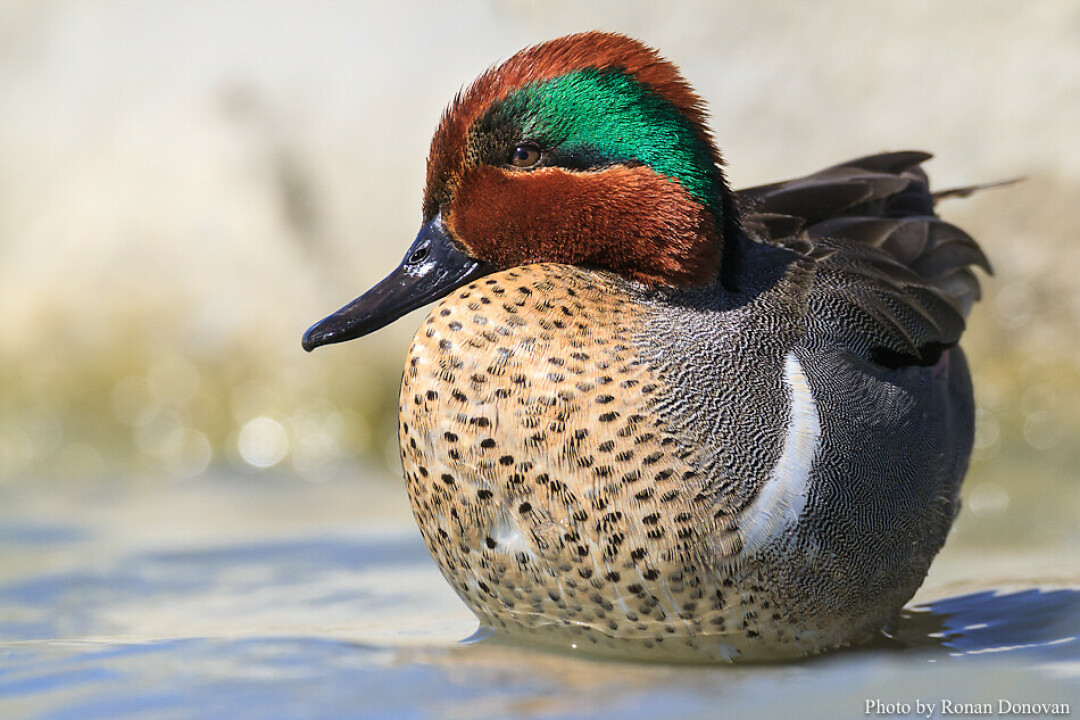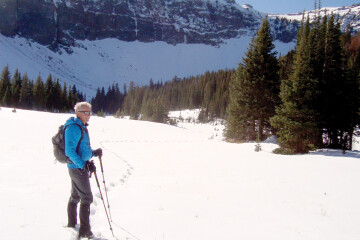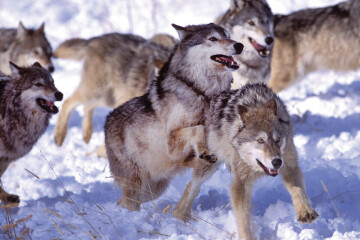Protecting Bozeman Wetlands

Wetlands are some of Gallatin County’s most valuable real estate. Protecting them is essential to the long-term health and prosperity of our communities. As we celebrate the 50th anniversary of the CleanWater Act (CWA), Sacajawea Audubon Society is shining a spotlight on the role wetlands play in a sustainable Gallatin Valley future.
Wetlands are important for a number of reasons. They provide critical bird and wildlife habitat, absorb water and release it during times when rivers most need it. Over 75% of wildlife species in Southwest Montana spend at least part of their life cycle in wetlands. Amid the frenzy of commercial and residential development, land that remains untouched has become rare. It has been estimated that we have lost a third of our wetlands since the mid 1800s.
On the east side of Bozeman you will find a wetland oasis surrounded by urban development. It has the potential to change the destiny of wetlands in the Gallatin Valley for generations. The site is a remnant of a large wetland complex and is the last intact wetland area yet to be built upon in Bozeman. It is an existing wetland, but it is degraded. Over the years, it has been drained for agricultural and urban development, leaving it in poor shape.
So, after decades of wishful thinking and dreams that Sacajawea Audubon Society would not let die, those dreams are becoming a reality. What was known as the East Main wetland, a 40-acre site always under threat of destruction, will now be preserved, restored and enhanced. Now designated as the Indreland Audubon Wetland Preserve, it will be there for future generations to enjoy. It will serve as an environmental study area, an educational resource, and a place to experience the intricate beauty of a wetland—all within the city limits of Bozeman.
Wonderful things are starting to happen since the donation of the property by Ileana Indreland and Mike Delaney, in 2018, to Sacajawea Audubon Society. Beavers are already back, doing what beavers do, creating dams. Several duck species (in addition to Mallards) returned for the first time in many years this past fall to grace the wetland. Those attending weekly bird walks witnessed interesting interactions, such as when a Northern Harrier plucked a Red-winged Blackbird out of the air.
With the help of their dedicated members and a grant from Kendeda Fund, Sacajawea Audubon Society and their partners, Gallatin Watershed Council, Ducks Unlimited, Trout Unlimited, Montana Freshwater Partners, Gallatin Valley Land Trust and Confluence Consulting, Inc. are excited to be moving forward with the Indreland Audubon Wetland Preserve (IAWP) 70% design plans.
Below is a summary of the 70% design, providing a general description of the basis of design and some of the innovative features that will make this project a success for both the wildlife and people of Bozeman. When reviewing this article, please refer to the map that illustrates the design features.
The IAWP was set aside by SAS to conserve and enhance a wetland community in an urban setting. The site will function as an environmental study area, offering education about wetland ecology accessible to all ages. SAS aims to document the effect of human influence on wetland communities and inspire the conservation, restoration, and enhancement of other wetlands. SAS strives to have an impact on wetland conservation that extends beyond the Gallatin watershed.
This 70% design will showcase the role of beaver as a keystone species in creating wetland habitat. The interspersion of open water areas, marshlands, wet meadows, willow, and alder dominated areas—as well as cottonwood and aspen forest habitat—creates numerous niches to support a diverse array of flora and fauna that maximizes the productivity of the site at numerous trophic levels.
The design provides a significant improvement in wetland function, particularly with regard to general wildlife habitat diversity, water quality improvements, short and long term surface water storage, food chain support, and groundwater discharge. The design also provides for visitor access and infrastructure consistent with conserving the wetland resource, while offering a place of respite in an urban area.
The Indreland Audubon Wetland Preserve is comprised of the North Parcel and the South Parcel—north and south of the railroad tracks, respectively. Proposed wetland enhancement activities differ considerably between the two parcels.
North Parcel
The North Parcel contains a few small wetlands, but is currently dominated by smooth brome (an upland grass species) and is located between Interstate 90 on its north and east sides, and the railroad on its south and west sides. An historic railroad berm occupies the northwestern boundary. Onsite investigations of groundwater depths in 2020 revealed that groundwater is relatively shallow. Analysis of the limited data set suggests that excavation of approximately two feet of soil will be sufficient for the establishment and development of approximately six acres of emergent wet meadow. This type of wetland will be seasonally wet in spring and early summer, then be expected to dry out over the course of the summer months. Persistent open water or complex habitats are not proposed for the North Parcel.
The conversion of the North Parcel to a more diverse, seasonally wet meadow provides several ecological improvements for sensitive wildlife species, general wildlife habitat, short and long term surface water storage, production export/food chain support, and site uniqueness.
South Parcel
Proposed improvements on the South Parcel are designed to increase habitat diversity and interspersion on the site, thereby increasing ecological niches and associated flora and faunal diversity. Perhaps the biggest change is the addition of 3.3 acres of open water habitat, ranging in depths from two to 16 feet across seven ponds. The design includes the bottom release of cool water from a 16-foot-deep pond that, because of its depth, causes the water column in the pond to stratify into temperature bands with the coldest water occurring at the bottom of the pond. During late August and September, when water temperatures can be their most lethal for cold-water fish and aquatic organisms, this cool water discharging from the site will provide refuge from extreme water temperatures. Experience with this design in Montana has demonstrated a consistent reduction of 5-10° F between water temperatures flowing into a site and the water being discharged from a bottom release pond such as that intended for the South Parcel.
Shrubby thickets and forested areas add structural complexity and habitats sought after by numerous neotropical migrant species. Their proximity to open water, wet meadow, and marshy habitats makes these habitats even more productive and appealing to a variety of species, leading to increased biodiversity and abundance of individual species found on the site. The addition of the forested area, particularly along the southwest portion of the South Parcel, adds a visual buffer for resident and migrant waterfowl from development along East Main Street and from planned visitor trails in that part of the Preserve.
Next fall or winter, Sacajawea Audubon Society hopes to begin construction on ponds and berms. They will also take the final steps toward establishing a mitigation bank at the Indreland Audubon Wetland Preserve site. The Sacajawea Audubon Society and its partners will be calling on their members and the community for their thoughts on how they would like to use the trails and educational opportunities the Preserve has to offer. Ultimately, once all fundraising goals are met, Bozeman will finally have a long-dreamed-of nature center at the Indreland Audubon Wetland Preserve. So, there is more to be done and we hope you choose to be part of it through your gifts, volunteering, and simply showing up to enjoy!
This article was written by members of the Sacajawea Audubon Society (SAS) Wetland PreservationProject (WPP) Committee; Loreene Reid, Chris Nixon, John Edwards and Rich McEldowney
THE WETLAND PRESERVATION PROJECT (WPP) was initiated to accomplish SAS’s mission to protect and restore increasingly rare wetland habitat in our region, and to provide educational opportunities and enjoyment for generations to come. The IAWP is the first of our wetland protection projects.





